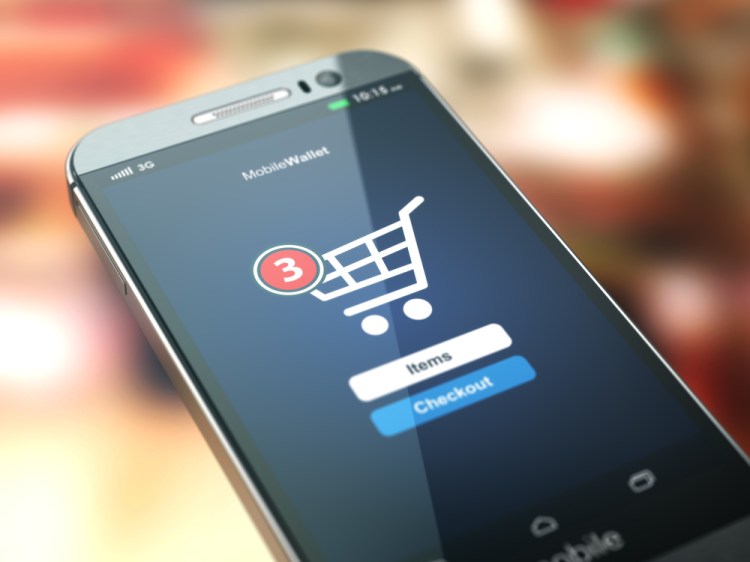There’s been a lot of talk about chatbots in the past year. These mini-apps live within messaging services, mimicking human conversation and letting customers order a pizza or book a hotel effortlessly. They have the potential to improve the way we browse, buy, and communicate with brands. However, the technology is in its infancy, and companies are still working out how to best use it. Here are five ways bots may change commerce forever.
1. Easy receipts
In April, Facebook reps said that they want businesses to use its Messenger platform to provide services ranging from weather and traffic updates, to customized communications like receipts and shipping notifications, and even for direct conversations with customer service. Shopify, the ecommerce company that makes software for online stores, already allows its customers to send receipts via Facebook Messenger. Other platforms and retailers have since followed.
Some customers will prefer to get a receipt via messaging to getting a receipt via email or SMS. Consider the rapid growth in demand for instant messaging services worldwide. More than 2.5 billion people now use them, according to Activate, a technology consultancy firm.
Retailers can benefit by interacting with customers more frequently (updating them about orders and answering questions about stock and changes to orders). Chatting with a bot via text or in a voice conversation should begin to feel more natural as artificial intelligence improves.
However, the growth in bots may create some technical challenges for retailers, at least in the short term. Retailers will need to integrate their back-office IT with the main messaging services (probably through an API and middleware) and look after the security and privacy of their customers’ data.
More work needs to be done to make bots more user friendly. Online retailers need to be able to quickly put a button on a website so users can connect via a messenger and instantly link to their account.
2. Better delivery tracking
Chatbots are not new — not really. They’re a more sophisticated version of more basic automated and interactive services we’ve had for years, such as SMS notifications (“we’re going to deliver your order tomorrow between 7am to 1pm, reply with 1 if you want to change the delivery time”).
Bots can keep customers better informed by, for example, including a map that tracks the delivery van and gives an estimated arrival time at the customer’s home. The customer could change the delivery time or rearrange a delivery by messaging the bot. Fewer missed deliveries means more satisfied customers.
Taco Bell, the fast food chain, has a bot that integrates with Slack’s instant messaging system. Its artificial intelligence means that it can take orders in natural language, give recommendations, and organize group orders from an office.
3. Micropayments
Blendle, a startup, is working with newspapers including the Financial Times and The New York Times on technology that lets readers pay as little as 20 cents (U.S.) to read a news article. Bots can make micro-payments easy to use in other industries, too.
Take parking. Rather than pushing coins into a parking meter, you can pay simply by interacting with the car park through a messenger app. A sign in the car park could give instructions on how customers can connect to its bot, which can process the payment. The benefit to the customer is that they don’t need to download an app, and the interaction is lightweight and focused.
Coffee shops have mobile apps for paying using your mobile phone. Why not let people pay through a bot instead?
4. Collecting and redeeming coupons
Bots could be used to track repeat business and earn coupons/loyalty points.
A customer in a restaurant could type in or scan a code on their receipt every time they have a meal. The bot will tell them how many points they have earned and tell them when they’ll receive their next reward.
Customers could also rate the dining experience and give feedback on the waitstaff.
5. Easy reordering and scheduling
Bots can get to know customers and save them time. Customers won’t need to go on a web site to place a reorder or find their customer number.
Bots could also be useful for “micro interactions” such as booking an appointment with your hairdresser or other local businesses.
Chatbots aren’t ideal for all purchases, though. You probably wouldn’t use a bot to buy a complex product, like a house — but you may use one to work out if you’re eligible for a mortgage and what the best deals are. Then you can book an appointment to see a financial adviser in person.
Is there a risk of bot overload and bot spam? Of course. But the technology industry can minimize this risk by making it easy to block a bot and specify how many updates a day a customer wants to see. Facebook is making progress in this area with its latest features and policy changes for its own platform.
With bots you pick up the conversation where you left off, saving time because you don’t need to give your address and other details to verify your identity. A bot can combine the benefits of automation and artificial intelligence without losing the human elements of customer service.
As the technology and, more importantly, the application of it improve, we hope that business interactions inside messaging apps will play an important role in commerce in the near future.
VentureBeat's mission is to be a digital town square for technical decision-makers to gain knowledge about transformative enterprise technology and transact. Learn More

